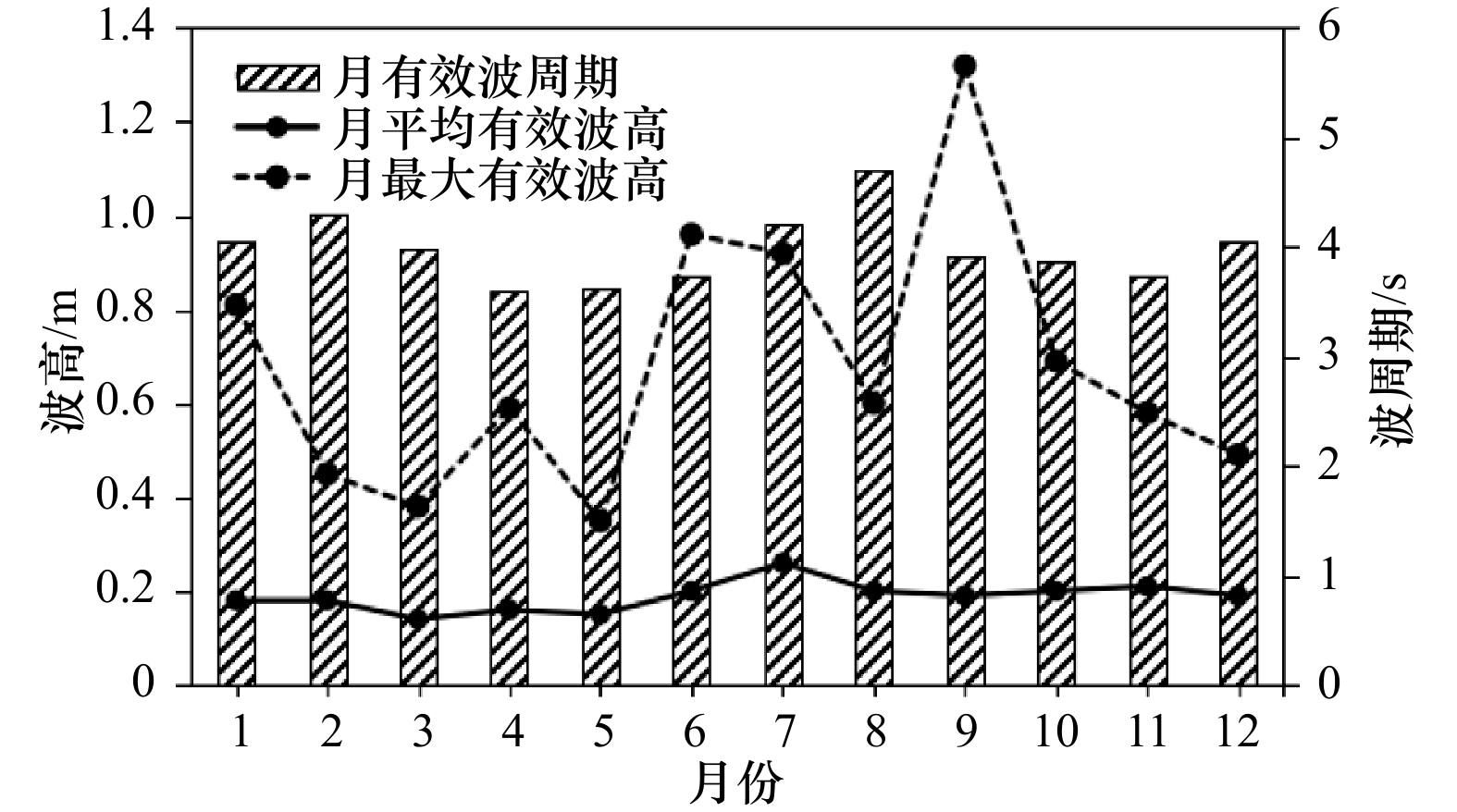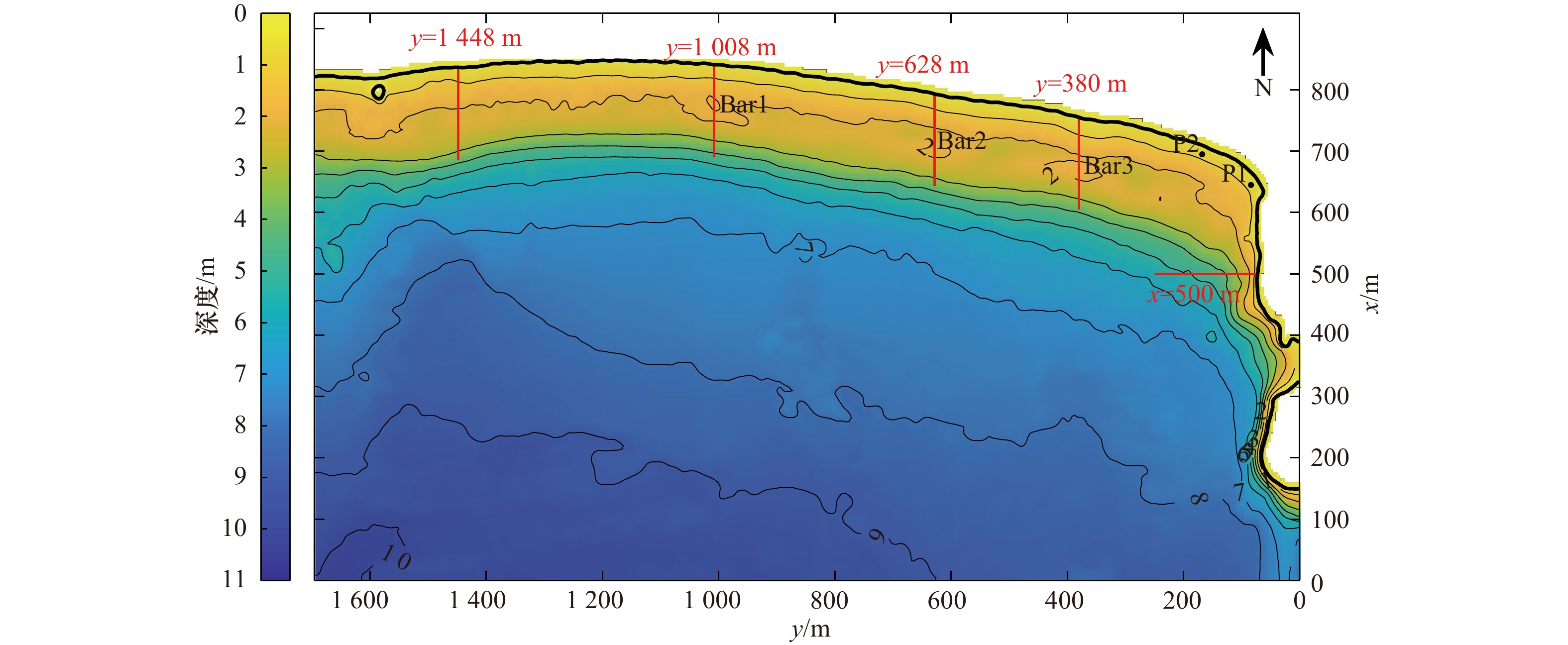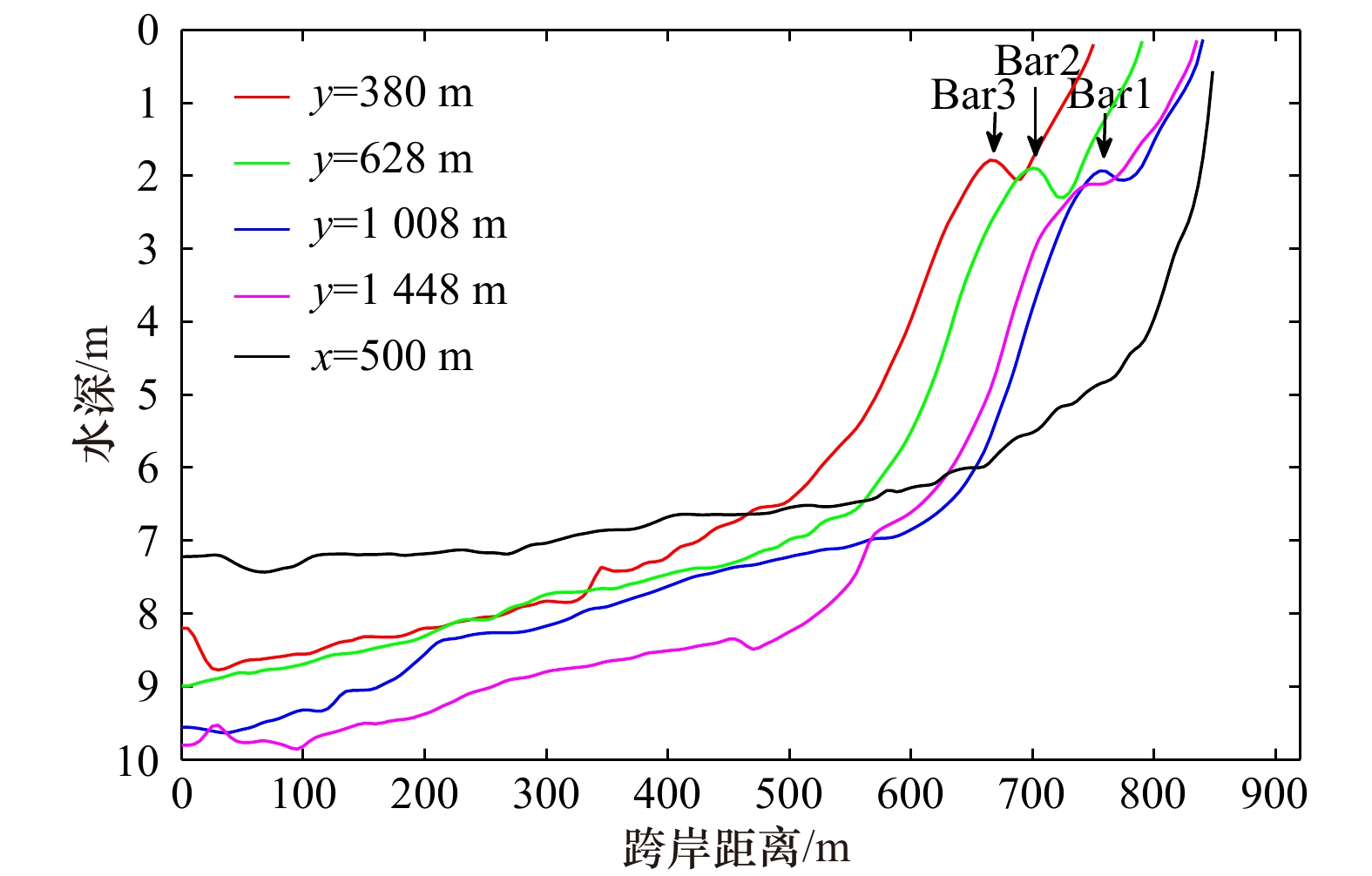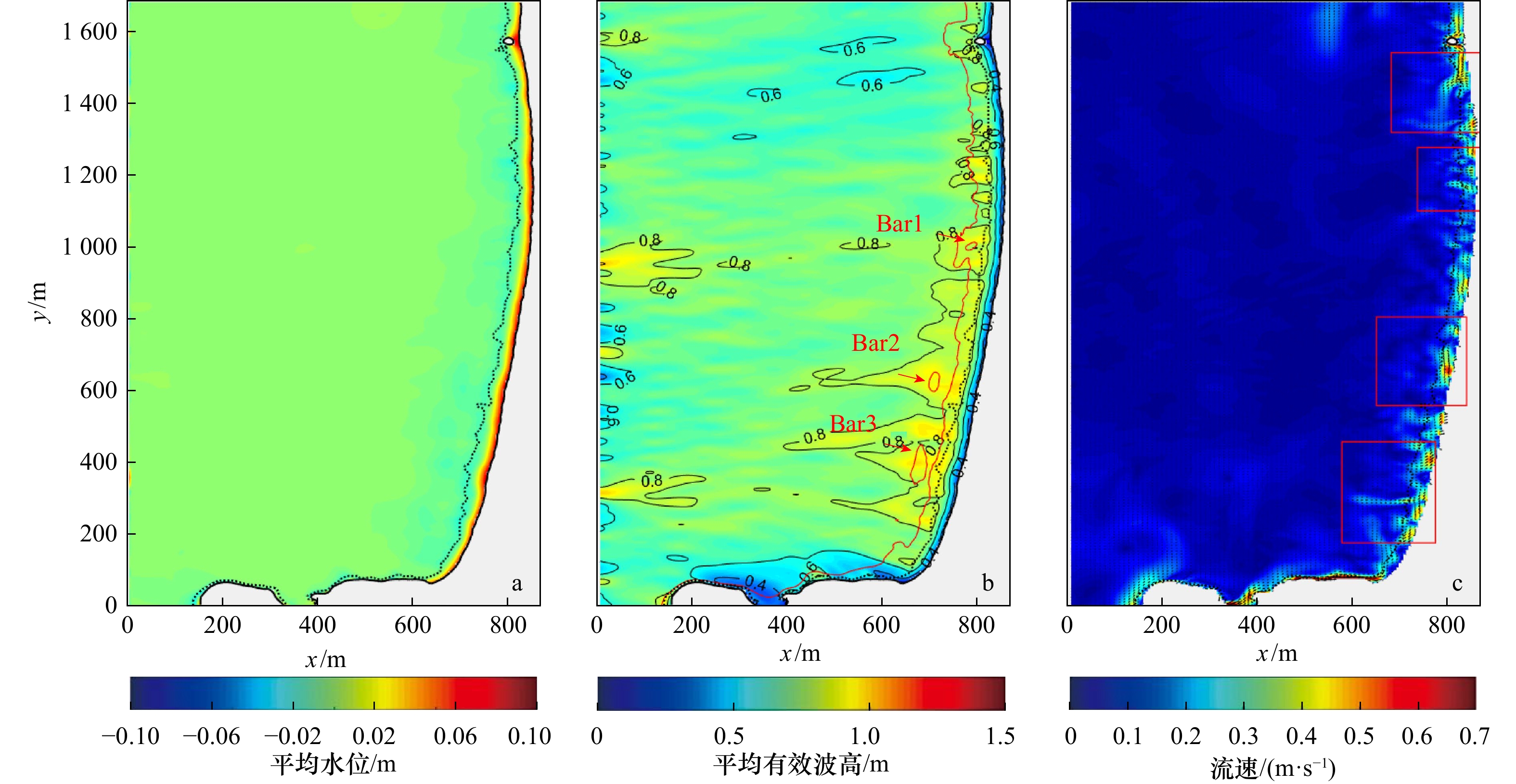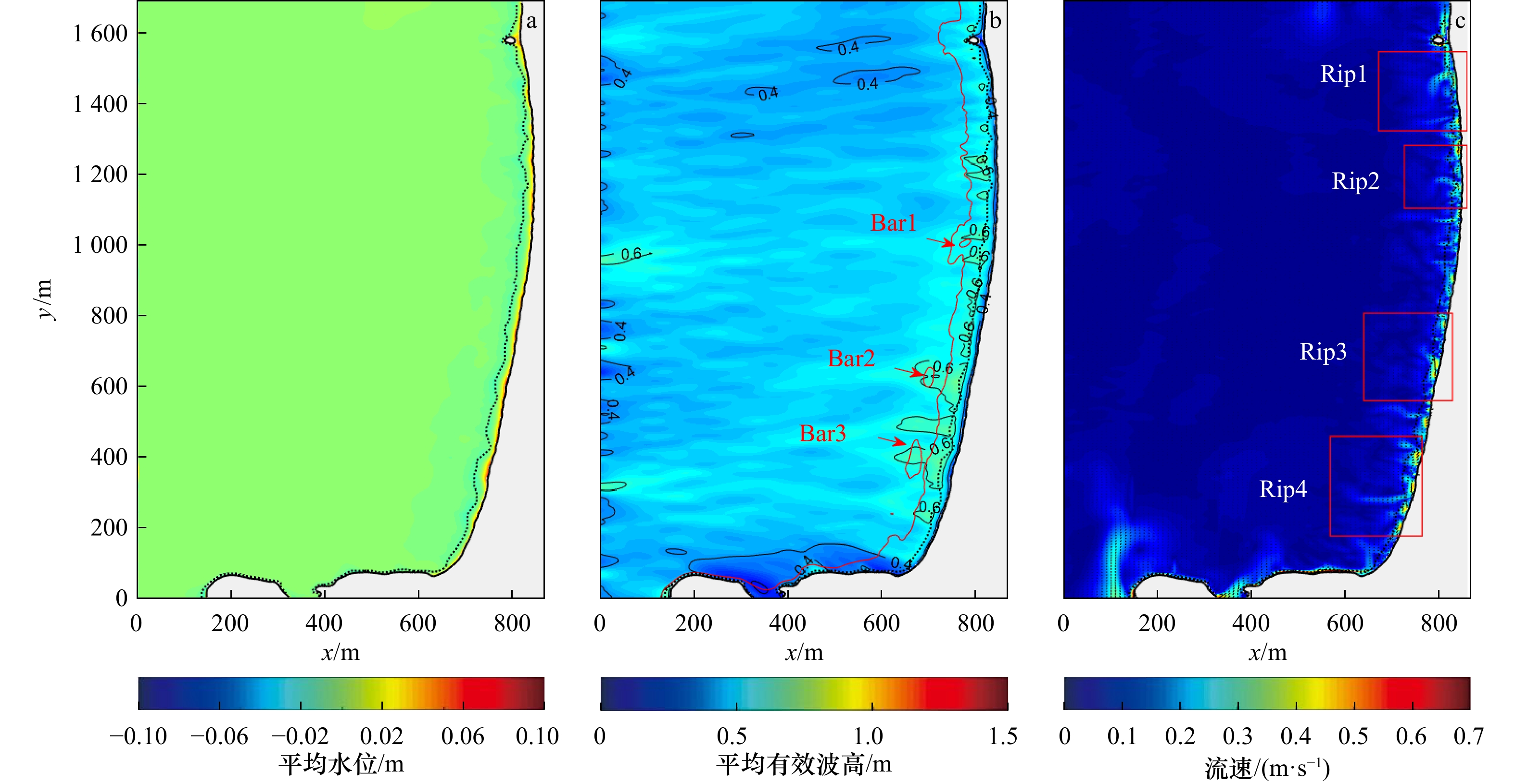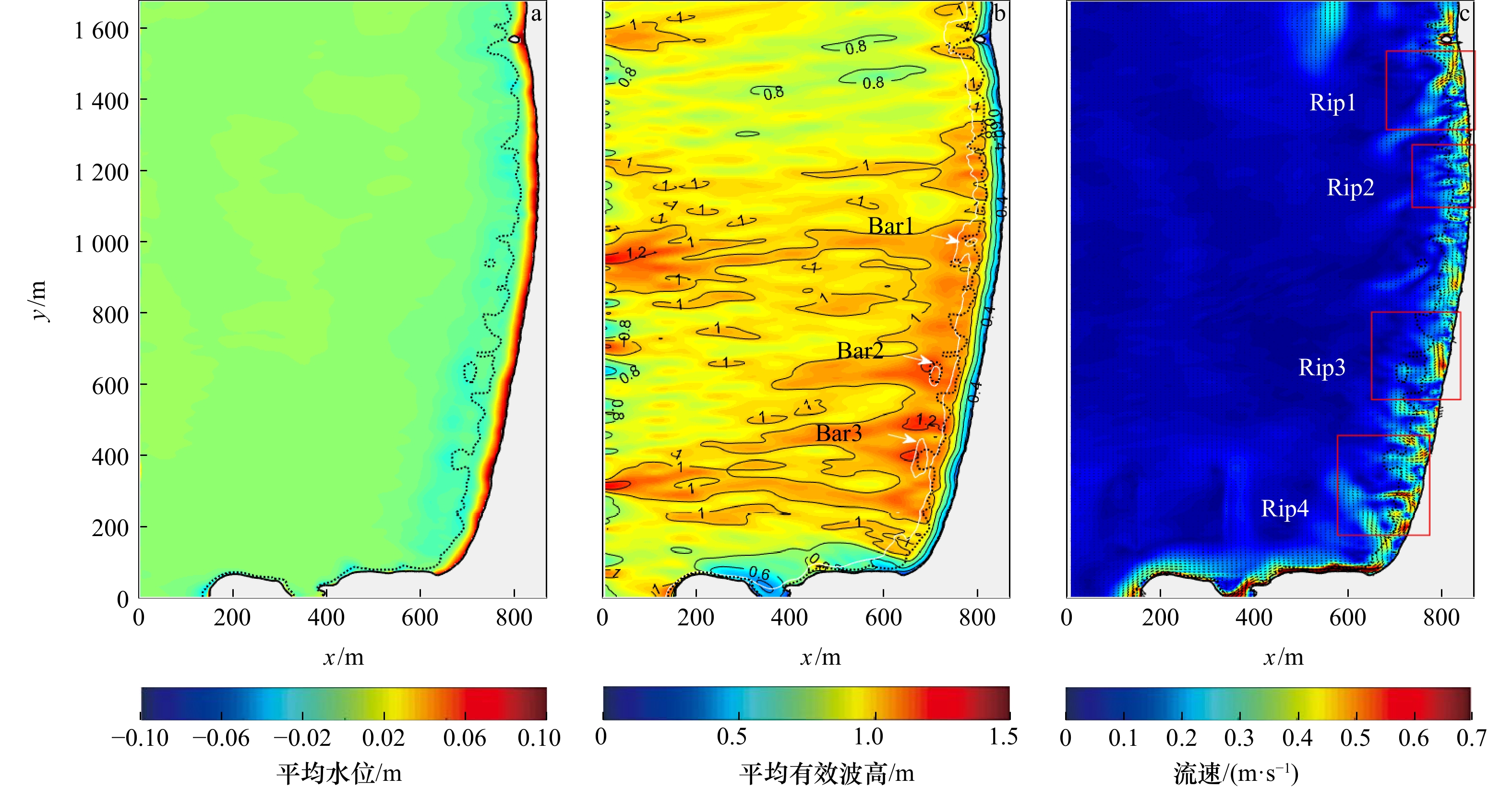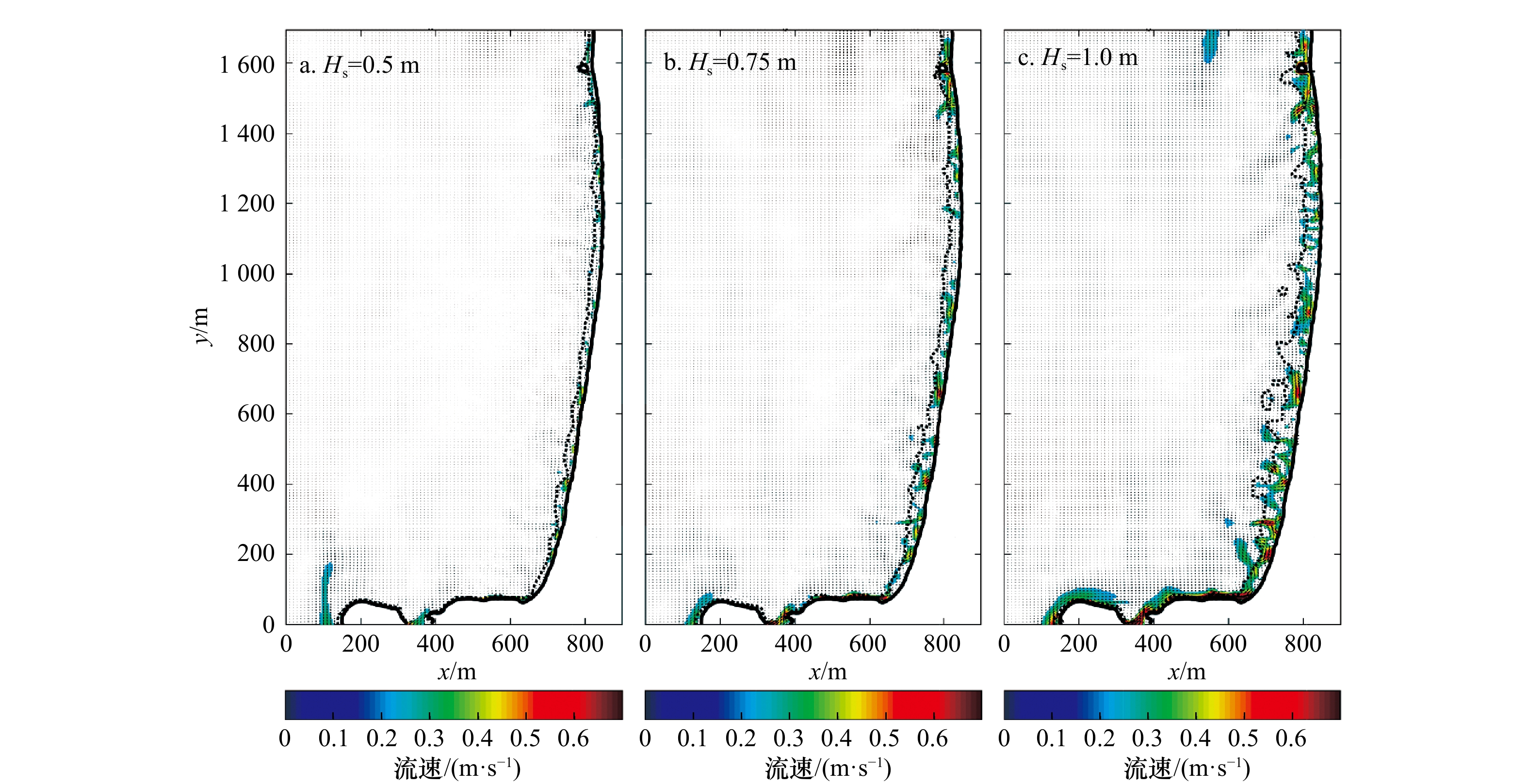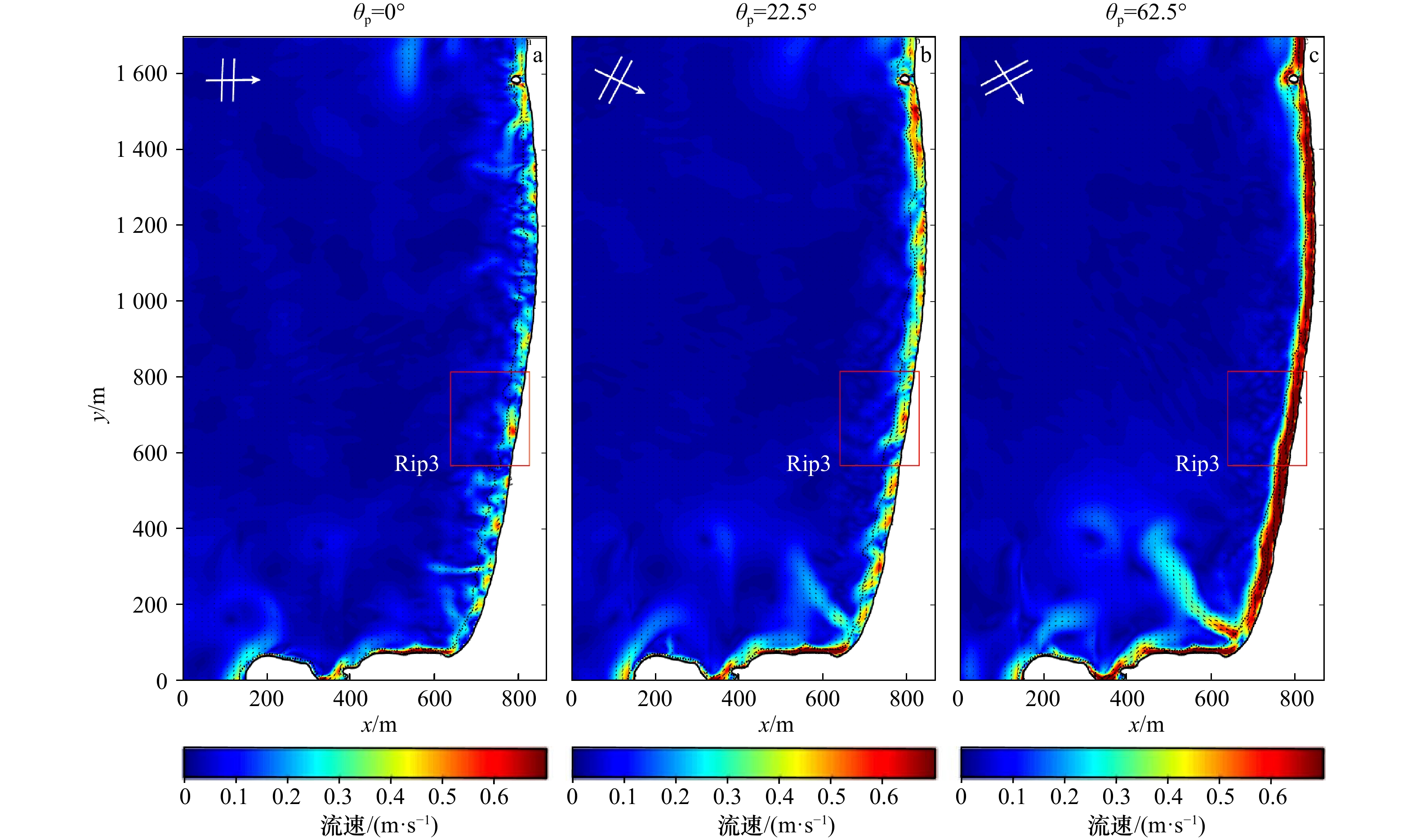Numerical simulation of rip current in Jinsha Bay, Shenzhen based on XBeach model
-
摘要: 金沙湾是粤港澳大湾区重要的滨海旅游景点之一,深受世界各地游客的青睐。利用XBeach模型模拟金沙湾海滩的近岸环流,研究了不同模拟波况下裂流的发生情况。结果表明,金沙湾产生裂流很大程度上受到波高和地形的影响,在年平均有效波高波况下,金沙湾沿岸无明显裂流,当入射波高超过某个阈值后,沿岸裂流风险提高。裂流的强度和离岸距离与入射波高呈正相关,波向增加不利于海滩处裂流的产生,但有利于偏斜裂流的形成,金沙湾的海滩管理者应该提高对波浪状况的预警,以降低因裂流而导致的危害。另外,由于长岬角特征,金沙湾产生的偏斜裂流的补偿流来自岬角和海滩的沿岸流,这一点需要通过后续的现场观测进行对比验证。本文的工作可为使用XBeach模型对裂流进行模拟研究提供参考。Abstract: Jinsha Bay is one of the most important tourist attractions in the Guangdong-Hong Kong-Macao Greater Bay Area and is favored by tourists from all over the world. The XBeach model is used to simulate the nearshore circulation of the Jinsha Bay, and the occurrence of rip current under different simulated wave conditions is studied. The results show that the rip current in the Jinsha Bay is largely affected by wave height and topography. Under the condition of annual mean significant wave height, there is no rip current along the Jinsha Bay. When the incident wave height exceeds a certain threshold, the risk of rip current increases. The intensity and offshore distance of the rip current are positively correlated with the incident wave height. When the wave direction is perpendicular to the coast, it is the best for the generation of rip current. The beach manager of the Jinsha Bay should improve the early warning of the wave condition in order to reduce the harm caused by the rip current. In addition, due to the characteristics of the long headland, the feeder current of the deflection rips generated by the Jinsha Bay comes from the alongshore currents of the headland and the beach. This can be verified by subsequent field observations. The work of this paper also provides some references for the domestic simulation research of rip current using XBeach model.
-
表 1 不同的模拟入射波条件
Tab. 1 Different simulated incident wave conditions
波况 有效波高
(Hs)/m峰值波周期
(Tp)/s峰值波角
(θp)/(°)波向 1 0.19 5 0 S 2 0.75 5 0 S 3 0.50 5 0 S 4 1.00 5 0 S 5 0.75 5 22.5 SSW 6 0.75 5 62.5 WSW -
[1] Long J W, Özkan-Haller H T. Offshore controls on nearshore rip currents[J]. Journal of Geophysical Research, 2005, 110(C12): C12007. doi: 10.1029/2005JC003018 [2] Dalrymple R A. A mechanism for rip current generation on an open coast[J]. Journal of Geophysical Research, 1975, 80(24): 3485−3487. doi: 10.1029/JC080i024p03485 [3] Dalrymple R A. Rip currents and their causes[J]. Coastal Engineering Proceedings, 1978, 1(16): 83. doi: 10.9753/icce.v16.83 [4] Tang E C S, Dalrymple R A. Rip currents and wave groups[M]//Seymour R J. Nearshore Sediment Transport. Boston, MA: Springer, 1989: 205−230. [5] Shepard F P, Emery K O, La Fond E C. Rip currents: a process of geological importance[J]. The Journal of Geology, 1941, 49(4): 337−369. doi: 10.1086/624971 [6] Inman D L, Tait R J, Nordstrom C E. Mixing in the surf zone[J]. Journal of Geophysical Research, 1971, 76(15): 3493−3514. doi: 10.1029/JC076i015p03493 [7] Castelle B, Scott T, Brander R W, et al. Rip current types, circulation and hazard[J]. Earth-Science Reviews, 2016, 163: 1−21. doi: 10.1016/j.earscirev.2016.09.008 [8] Li Zhiqiang. Rip current hazards in South China headland beaches[J]. Ocean & Coastal Management, 2016, 121: 23−32. [9] Kumar S V V A, Prasad K V S R. Rip current-related fatalities in India: a new predictive risk scale for forecasting rip currents[J]. Natural Hazards, 2014, 70(1): 313−335. doi: 10.1007/s11069-013-0812-x [10] Short A D. Australian rip systems—friend or foe?[J]. Journal of Coastal Research, 2007, SI 50: 7−11. [11] Brewster B C. Rip current misunderstandings[J]. Natural Hazards, 2010, 55(2): 161−162. doi: 10.1007/s11069-010-9527-4 [12] Gensini V A, Ashley W S. An examination of rip current fatalities in the United States[J]. Natural Hazards, 2010, 54(1): 159−175. doi: 10.1007/s11069-009-9458-0 [13] Shepard F P. Undertow, rip tide or “rip current”[J]. Science, 1936, 84(2173): 181−182. doi: 10.1126/science.84.2173.181 [14] 孟凡昌, 李本霞. 裂流的研究综述[J]. 海洋预报, 2017, 34(1): 82−89. doi: 10.11737/j.issn.1003-0239.2017.01.011Meng Fanchang, Li Benxia. Review on the study of the rip current[J]. Marine Forecasts, 2017, 34(1): 82−89. doi: 10.11737/j.issn.1003-0239.2017.01.011 [15] Longuet-Higgins M S, Stewart R W. Radiation stresses in water waves: a physical discussion, with applications[J]. Deep Sea Research and Oceanographic Abstracts, 1964, 11(4): 529−562. doi: 10.1016/0011-7471(64)90001-4 [16] Reniers A J H M, MacMahan J H, Thornton E B, et al. Surf zone surface retention on a rip-channeled beach[J]. Journal of Geophysical Research, 2009, 114(C10): C10010. doi: 10.1029/2008JC005153 [17] Reniers A J H M, MacMahan J H, Beron-Vera F J, et al. Rip-current pulses tied to Lagrangian coherent structures[J]. Geophysical Research Letters, 2010, 37(5): L05605. [18] Castelle B, Reniers A, MacMahan J. Bathymetric control of surf zone retention on a rip-channelled beach[J]. Ocean Dynamics, 2014, 64(8): 1221−1231. doi: 10.1007/s10236-014-0747-0 [19] Scott T, Austin M, Masselink G, et al. Dynamics of rip currents associated with groynes—field measurements, modelling and implications for beach safety[J]. Coastal Engineering, 2016, 107: 53−69. doi: 10.1016/j.coastaleng.2015.09.013 [20] 朱磊, 孙家文, 王宏, 等. 基于XBeach模型的离岸堤群防护效果评价指标[J]. 海洋环境科学, 2020, 39(5): 684−693. doi: 10.12111/j.mes.20190157Zhu Lei, Sun Jiawen, Wang Hong, et al. Evaluation index of protection effect of breakwaters based on XBeach model[J]. Marine Environmental Science, 2020, 39(5): 684−693. doi: 10.12111/j.mes.20190157 [21] 刘硕. 基于物理模型实验和XBeach数值模拟的植被消浪研究[D]. 南京: 东南大学, 2019.Liu Shuo. Study on wave attenuation under vegetation based on physical experiment and XBeach model[D]. Nanjing: Southeast University, 2019. [22] 王宏. 考虑绕射的XBeach模型数值模拟研究[D]. 大连: 大连理工大学, 2019.Wang Hong. Numerical simulation of XBeach model with diffraction[D]. Dalian: Dalian University of Technology, 2019. [23] 房克照, 邹志利, 刘忠波. 沙坝海岸上裂流的数值模拟[J]. 水动力学研究与进展, 2011, 26A(4): 479−486.Fang Kezhao, Zou Zhili, Liu Zhongbo. Numerical simulation of rip current generated on a barred beach[J]. Chinese Journal of Hydrodynamics, 2011, 26A(4): 479−486. [24] 张尧, 刘强, 刘旭楠, 等. 韵律沙坝触发的裂流动态性研究[J]. 浙江大学学报(工学版), 2020, 54(9): 1849−1857.Zhang Yao, Liu Qiang, Liu Xu’nan, et al. Variability of rip currents induced by rhythmic sandbars[J]. Journal of Zhejiang University (Engineering Science), 2020, 54(9): 1849−1857. [25] Wang Hong, Zhu Shouxian, Li Xunqiang, et al. Numerical simulations of rip currents off arc-shaped coastlines[J]. Acta Oceanologica Sinica, 2018, 37(3): 21−30. doi: 10.1007/s13131-018-1197-1 [26] Roelvink D, Reniers A, Van Dongeren A, et al. Modelling storm impacts on beaches, dunes and barrier islands[J]. Coastal Engineering, 2009, 56(11/12): 1133−1152. [27] Austin M J, Scott T M, Russell P E, et al. Rip current prediction: development, validation, and evaluation of an operational tool[J]. Journal of Coastal Research, 2013, 29(2): 283−300. [28] MacMahan J H, Reniers A J H M, Thornton E B, et al. Infragravity rip current pulsations[J]. Journal of Geophysical Research, 2004, 109(C1): C01033. doi: 10.1029/2003JC002068 [29] Choi J, Yoon S B. Numerical simulation of nearshore circulation on field topography under random wave environment[J]. Coastal Engineering, 2011, 58(5): 395−408. doi: 10.1016/j.coastaleng.2010.12.002 [30] Castelle B, McCarroll R J, Brander R W, et al. Modelling the alongshore variability of optimum rip current escape strategies on a multiple rip-channelled beach[J]. Natural Hazards, 2016, 81(1): 663−686. doi: 10.1007/s11069-015-2101-3 [31] McCarroll R J, Castelle B, Brander R W, et al. Modelling rip current flow and bather escape strategies across a transverse bar and rip channel morphology[J]. Geomorphology, 2015, 246: 502−518. doi: 10.1016/j.geomorph.2015.06.041 [32] Dalrymple R A, MacMahan J H, Reniers A J H M, et al. Rip currents[J]. Annual Review of Fluid Mechanics, 2011, 43: 551−581. doi: 10.1146/annurev-fluid-122109-160733 [33] McCarroll R J, Brander R W, Turner I L, et al. Lagrangian observations of circulation on an embayed beach with headland rip currents[J]. Marine Geology, 2014, 355: 173−188. doi: 10.1016/j.margeo.2014.05.020 -





 下载:
下载:
